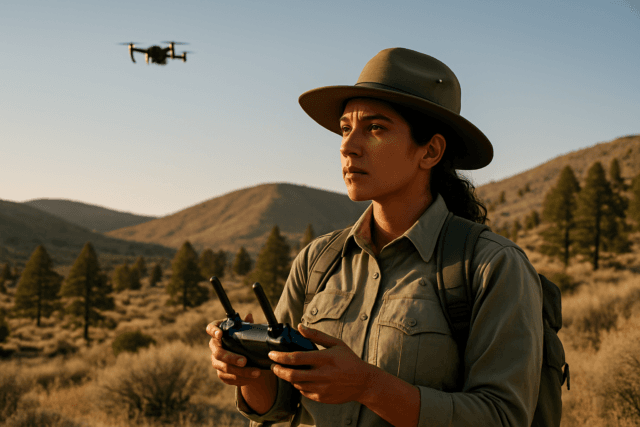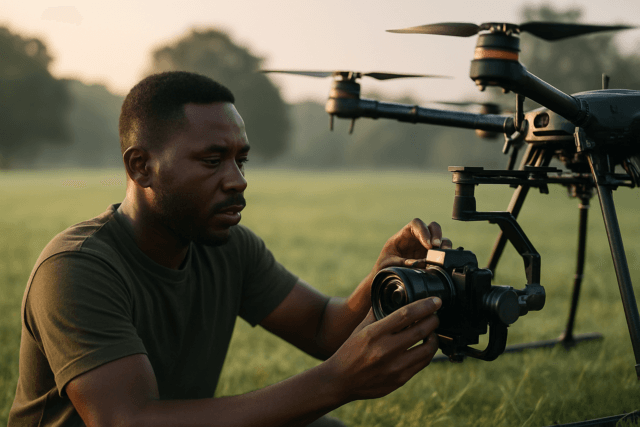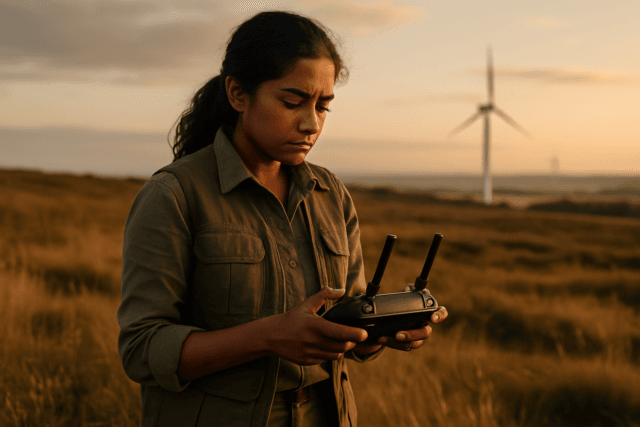The promise of drone delivery — rapid, efficient, and environmentally friendly— is rapidly transforming the logistics landscape. As companies like Amazon, UPS, and Wing expand their drone operations, the underlying success factor isn’t just advanced hardware, but the sophisticated data analytics that fuels every flight. This digital backbone is crucial for overcoming challenges like limited battery life, payload restrictions, and complex airspace regulations, turning raw data into actionable insights that optimize every facet of drone delivery performance.
The Core of Drone Delivery Optimization
At its heart, drone delivery optimization relies on collecting and analyzing vast amounts of data from sensors, cameras, GPS, and external sources like weather forecasts and air traffic control. This data is then processed using advanced algorithms, including Artificial Intelligence (AI) and Machine Learning (ML), to make real-time decisions and continuously improve operations. The goal is to enhance efficiency, reduce costs, improve safety, and ultimately, increase customer satisfaction.
Key Data Analytics Categories for Enhanced Performance
Several critical areas benefit from robust data analytics, ensuring that drone delivery services operate at peak performance.
Route Optimization & Navigation Analytics
One of the most significant applications of data analytics in drone delivery is optimizing flight paths. Machine learning algorithms analyze real-time data from various factors, including weather conditions, wind speed, traffic patterns, terrain, obstacles, and airspace restrictions, to determine the most efficient and safest routes. This dynamic route planning allows drones to make on-the-fly adjustments to avoid unexpected changes, minimizing fuel consumption, reducing delivery times, and lowering operational costs. Energy-aware planning frameworks also focus on managing energy risk, as a drone’s energy cost is significantly affected by airflow and payload. Predictive models can determine optimal speed and payload combinations to maximize range and energy efficiency, leading to substantial energy savings compared to fixed speeds.
Predictive Maintenance & Fleet Management
To ensure reliable operations and minimize costly downtime, predictive maintenance leveraging drone data is a game-changer. Sensors embedded in drones continuously collect data on component performance, battery health, and wear and tear. Machine learning algorithms analyze this data to detect patterns and anomalies, forecasting when components might require maintenance or replacement before failures occur. This proactive approach not only prevents unexpected breakdowns and ensures timely deliveries but also optimizes resource allocation for maintenance, extends asset lifespan, and reduces overall operational expenses. AI-powered fleet management systems further automate scheduling, dispatch, and dynamic reassignment of drones to ensure optimal coverage and efficiency across delivery areas.
Demand Forecasting & Inventory Management
Data analytics helps drone delivery services anticipate future demand and manage their resources effectively. By analyzing historical delivery patterns, customer preferences, and real-time market trends, businesses can accurately forecast demand. This enables optimal drone allocation, efficient inventory management, and planning for growth, ensuring they have the necessary resources to meet customer needs. Better forecasting can significantly reduce stockouts by up to 50%.
Operational Efficiency & Performance Monitoring
Real-time monitoring and analysis of key performance indicators (KPIs) are vital for improving drone delivery services. Businesses track metrics such as delivery time, success rate, cost per delivery, customer satisfaction scores, and drone fleet utilization. Analyzing this data allows companies to identify operational inefficiencies, pinpoint bottlenecks, and make data-driven decisions to enhance overall performance and reduce costs. For instance, effective fleet utilization minimizes downtime and maintenance expenses, contributing to cost efficiency. Studies show that real-time KPI tracking can improve delivery times by up to 70%.
Regulatory Compliance & Safety Analytics
The complex and evolving regulatory landscape for drone operations necessitates robust data analytics for compliance and safety. AI systems enable drones to operate within designated airspace, adhere to local laws, and follow restrictions on altitude, flight paths, and no-fly zones. Data analytics also helps in automatically tracking and reporting flight data to ensure compliance with aviation regulations, helping operators avoid penalties and maintain high operational standards. Real-time decision-making powered by AI can assess risks like sudden storms or unexpected obstacles, allowing drones to adjust flight paths or delay deliveries for safety.
Technologies Powering Drone Delivery Analytics
The insights derived from drone data are made possible by integrating several cutting-edge technologies:
- Artificial Intelligence (AI) and Machine Learning (ML): These are foundational, enabling autonomous navigation, real-time decision-making, route optimization, and predictive analytics. ML algorithms allow drones to learn and adapt from their flight experiences, constantly improving operations.
- Internet of Things (IoT) Sensors: Drones are equipped with numerous sensors (e.g., GPS, accelerometers, gyroscopes, cameras, LiDAR, radar) that continuously collect vast amounts of data during operations.
- Cloud Computing: The enormous amounts of data generated by drone fleets are processed, stored, and analyzed on cloud platforms, providing real-time insights and enabling scalable drone networks without heavy on-site infrastructure investment.
- Geospatial Systems: These systems are critical for mapping, navigation, and defining operational areas, integrating with real-time data for precise route planning and obstacle avoidance.
The Future of Data-Driven Drone Logistics
The global drone delivery market is experiencing substantial growth, with projections of exponential expansion in the coming decade. This growth is driven by technological advancements, regulatory easing, and increasing demand for faster, more cost-effective, and contactless delivery solutions. As drones become more autonomous and integrated into smart cities, data analytics will continue to be the cornerstone of their optimization, driving further efficiencies, enhancing safety, and paving the way for a truly transformed logistics ecosystem.





